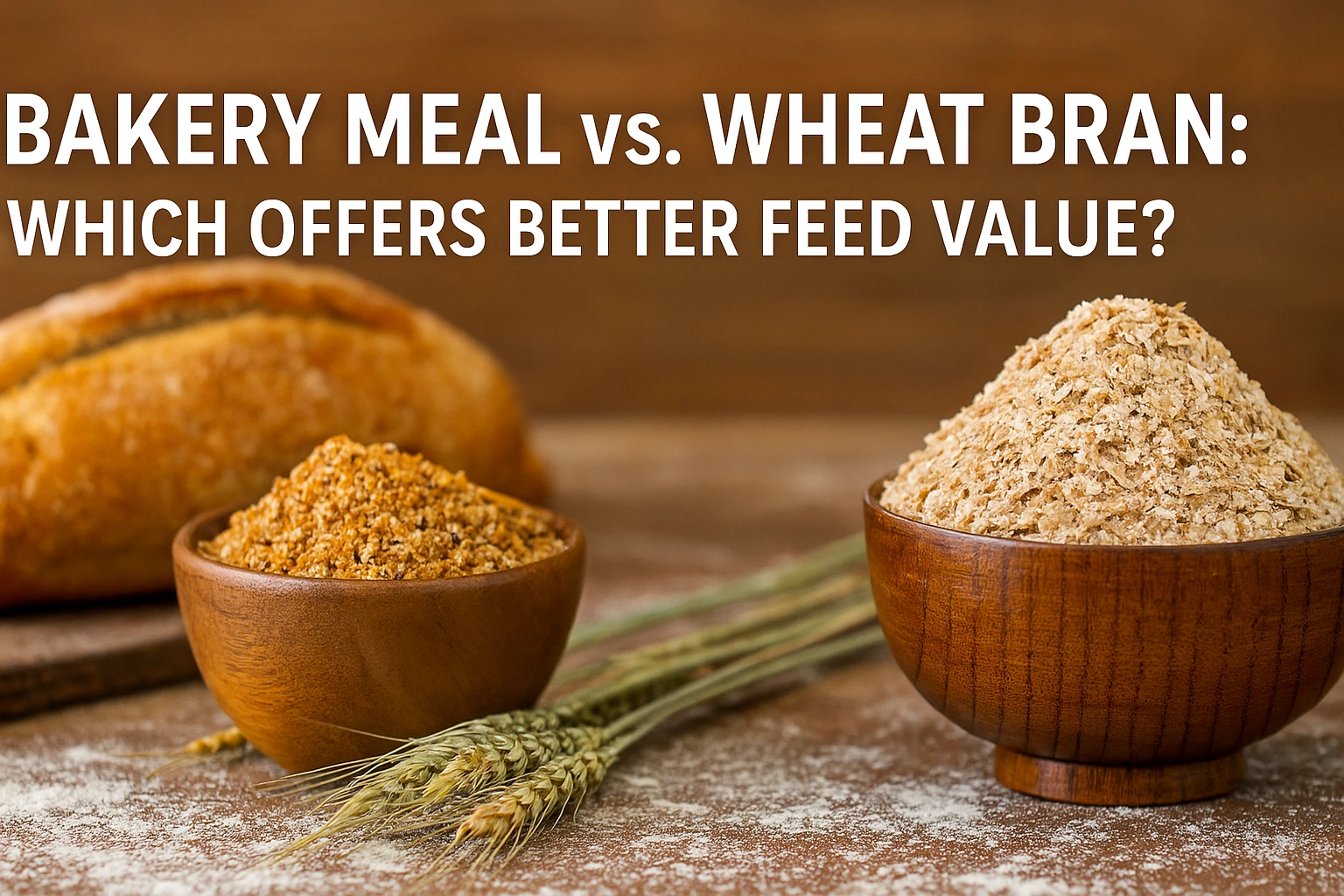Bakery Meal vs. Wheat Bran: Which Offers Better Feed Value?

Table of Content
-
Introduction: Alternative Feeds on the Rise
-
Nutritional Showdown—Protein, Energy, and Fiber
-
Livestock Performance and Digestibility Data
-
Economic and Practical Considerations
-
Conclusion: Optimizing Feed Value for 2025
1. Introduction: Alternative Feeds on the Rise
Surging grain prices, food waste regulations, and a push for sustainability are making byproduct feeds like bakery meal and wheat bran more attractive to livestock producers worldwide. These two ingredients—once considered only “fillers”—now compete head-to-head in ration balancing for pigs, poultry, goats, and ruminants. With global feed costs rising through 2025, selecting the right energy- and nutrient-rich byproduct can unlock large savings and enhance animal productivity.
2. Nutritional Showdown—Protein, Energy, and Fiber
-
Bakery meal typically contains 8–15% crude protein (CP), 5–10% fat (EE), 3–10% ash, ~40% starch, and significant sugars (often >15%), depending on component foods. Its dry matter energy (ME) can reach 3,600–4,000 kcal/kg DM—beating most cereal brans.
-
Wheat bran is higher in fiber (often >40%) and minerals (potassium, selenium, B-complex vitamins). CP values hover around 12–17%, but starch and available energy are lower (DE ~1,400-1,800 kcal/kg for monogastrics), although ruminants can utilize the fiber more efficiently.
-
Bakery meal’s higher energy, palatability, and sugar content make it comparable to corn or wheat in energy density, while wheat bran’s value is in its bulking fiber and micronutrient content.
3. Livestock Performance and Digestibility Data
Studies show that:
-
Swine and poultry fed bakery meal (partly replacing grains or wheat bran) show equal or better growth rates, excellent feed conversion, and improved palatability, up to 20–30% inclusion without performance loss.
-
Bakery meal has higher total tract digestibility of gross energy (GE ~83–86%; ME ~3,950–4,000 kcal/kg DM).
-
Wheat bran is best used for ruminants (dairy, beef, goats), where fiber improves rumen function, but can be too bulky for high energy needs in non-ruminants unless paired with enzymes or other high-energy feeds.
-
Trials in goats and lambs confirmed that bakery meal can replace wheat bran and even portions of corn without harming intake, growth, or meat quality, and generally lowers feed cost.
4. Economic and Practical Considerations
-
Bakery meal price varies by region and component foods—batched from surplus bread, breakfast cereals, or biscuits—but usually offers better cost per kcal for monogastrics.
-
Wheat bran is steady, widely available as a milling byproduct, and securely traceable, making it a reliable staple especially for ruminant diets.
-
Bakery meal supply may fluctuate with food waste management and local bread industry trends; wheat bran steady due to constant flour production.
-
Quality control (screening for salt, mold, and composition) is vital for both, but especially for bakery meal because of batch-to-batch variability and salt content.
5. Conclusion: Optimizing Feed Value for 2025
Bakery meal delivers higher energy and often better feed cost outcomes for pigs and poultry, while wheat bran remains a fiber/mineral-rich choice for ruminants and specialized feeds. For cost-conscious feed buyers and producers, a blend or rotational use—backed by lab analysis and supplier documentation—can provide balanced nutrition and supply security in 2025 and beyond.

Leave a Comment